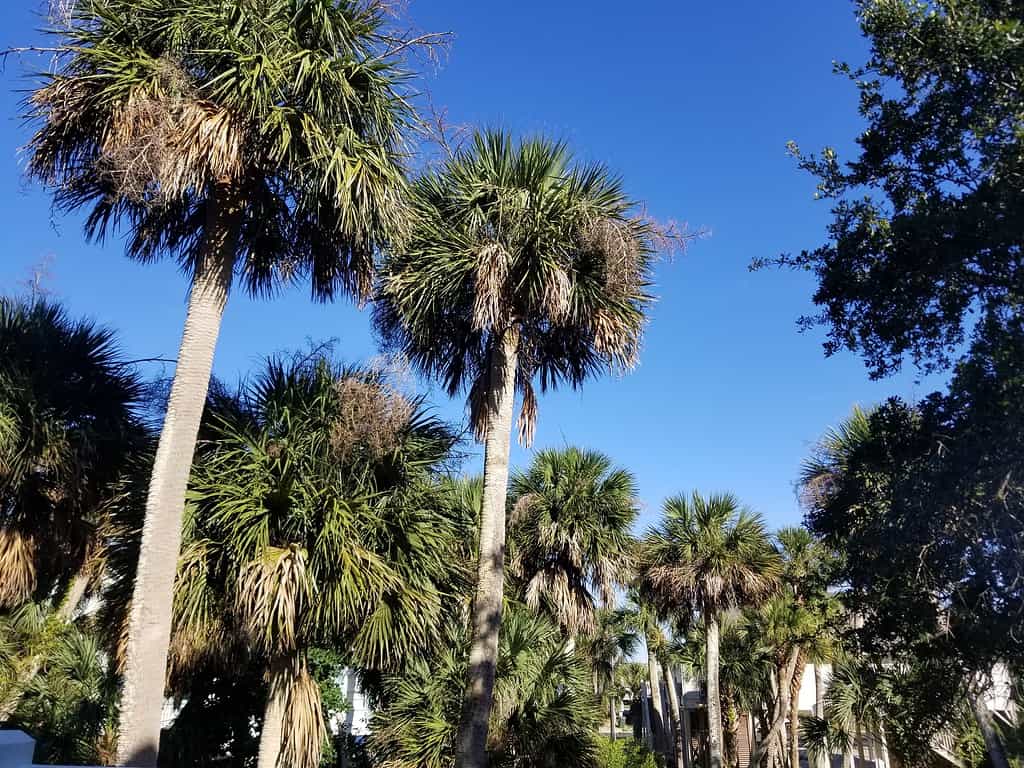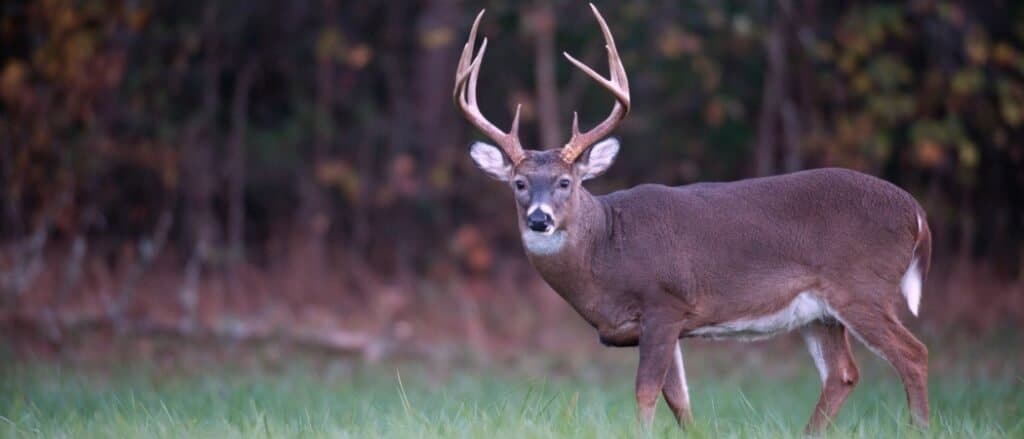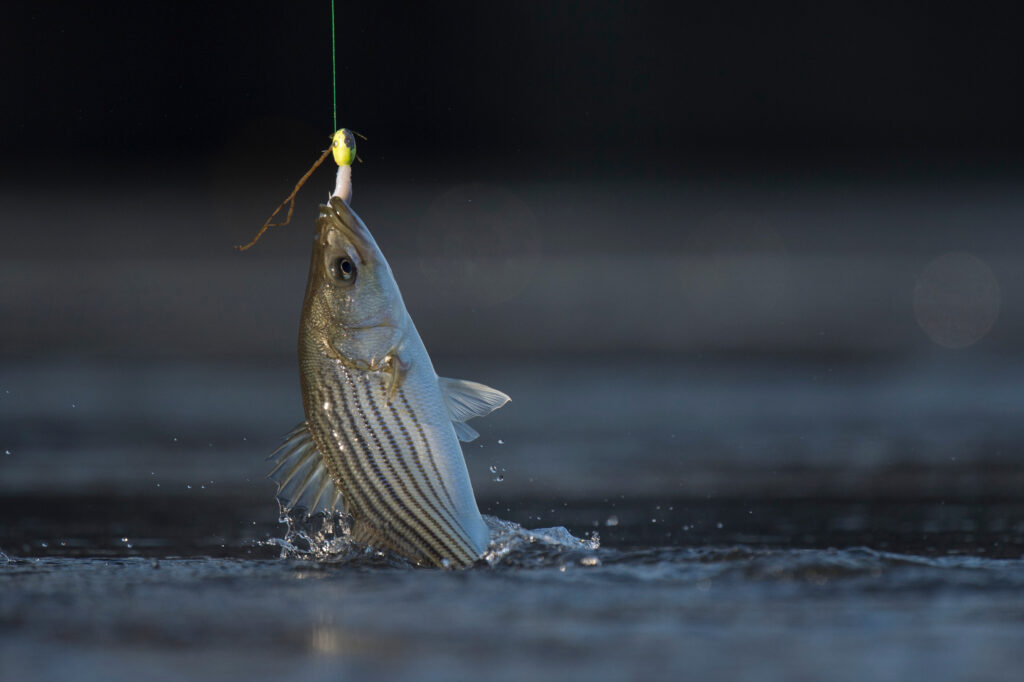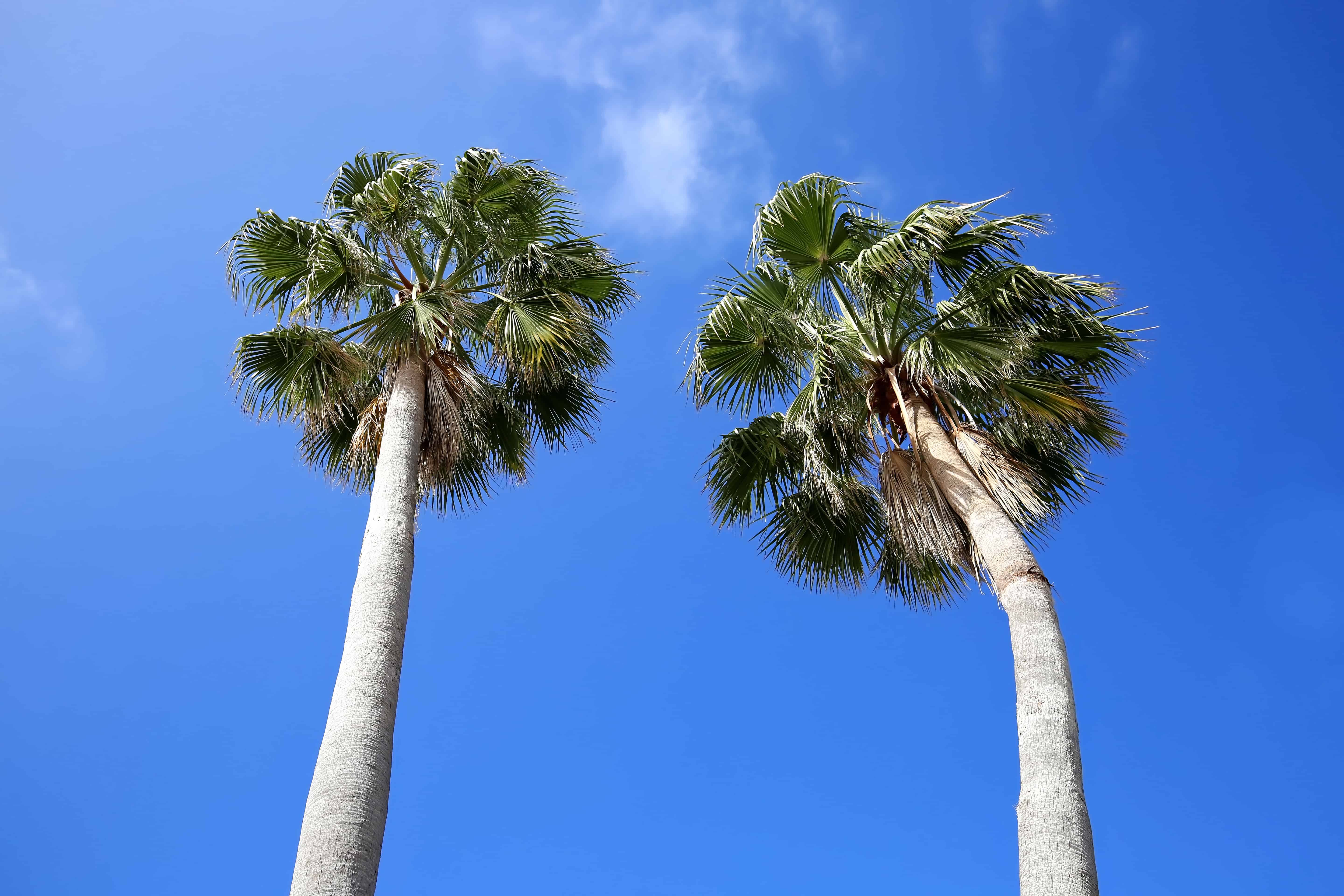Each of the states in the United States has a nickname. Some have adopted nicknames that highlight unique qualities, and others link their nicknames to the food they produce or famous landscapes. South Carolina is no different. Known as the “Palmetto State,” this nickname pays homage to the palmetto tree that is on both the state flag and seal. But what is a palmetto tree, and why is South Carolina called the “Palmetto State”?
Palmetto Trees in South Carolina

Palmetto trees are popular landscaping trees in South Carolina because of their distinct look and the shade they provide.
©KristenH9305/Shutterstock.com
The Sabal palmetto, also known as the “cabbage palmetto,” “cabbage palm,” or “Carolina palmetto,” is part of the palm family. Native to the southern United States, the Yucatán Peninsula in Mexico, and the West Indies, this impressive tree grows up to 80 feet tall. Stiff, thick stems hold up its fan-like leaves. The costapalmate leaves themselves are blue-green.
Costapalmate leaves are the midway mix of pinnate leaves and palmate leaves. Pinnate leaves look feather-like in shape, and all the leaves are separated from each other. Coconut and date palms both have pinnate leaves.
Palmate leaves, however, spread out like a handheld folding fan. All the leaf segments are adjacent to each other and laterally joined together. So, costapalmate leaves grow fan-like but take on a more oval shape. The leaf segments are adjacent to each other but attach to the costa in the center.
Palmetto trees are popular landscaping trees in South Carolina because of their distinct look and the shade they provide. Considering the hot, humid summers in South Carolina, you need all the shade you can get! Palmetto trees are also very low maintenance and reasonably adaptable. In fact, unlike some plants, palmetto trees are pretty tolerant of salty ocean spray and are quite drought resistant. Though, palmetto trees need hot, humid summers to thrive truly.
Because of the water-resistant nature of the trunks, palmetto trees are often used as wharf piling. People also use the leaves to weave mats and baskets. Even its buds are edible, though if you eat too many, it may kill the tree. Also, before antibiotics were discovered, the berries from the palmetto were used to treat inflammation, bronchial congestion, and cystitis.
Why is South Carolina Called the Palmetto State?

Once the palmetto became an official part of the state seal, the nickname of Palmetto State soon followed.
©vectorissimo/Shutterstock.com
One apparent reason is because of the abundance of palmetto trees across the state. South Carolina added the palmetto to the state flag and state seal and designated it as the official state tree. With it being a governmental symbol, the nickname of the “Palmetto State” was a natural adoption. It is also a historically significant tree dating back to the Revolutionary War. Soldiers built coastal forts out of the palmetto wood because its soft composition helped absorb the impact of cannon fire.
When Did South Carolina Adopt Its Nickname?

The General Assembly added the palmetto tree to the state flag in 1861 after it left the Union.
©iStock.com/rarrarorro
During the first half of the 19th century, the “Palmetto State” nickname really stuck. South Carolina seceded from the Union in 1861, and on January 28, 1861, the General Assembly added the palmetto tree to the flag’s design. Once the General Assembly included the tree on the flag, that helped solidify the “Palmetto State” as an official nickname of South Carolina.
Other Nicknames for South Carolina
The Iodine State
In the late 1920s, as a clever marketing campaign, the South Carolina Natural Resources Commission advertised the state’s fruits and vegetables as being high in iodine levels. They even promoted increased levels of iodine in their milk. On the national stage, the commission warned about the consequences of iodine deficiency—especially in young children. Repercussions included enlarged thyroids, birth defects, mental disorders, and even sterility.
In 1930, the nickname “The Iodine State” also appeared on license plates—further legitimizing the nickname. But, despite the push, South Carolina didn’t see much increase in their agricultural market. Once iodized salt hit the scene in the 1940s, Americans had a simple way to get their dietary supplement. Demand for produce high in iodine declined.
The Rice State
Rice was an abundant agricultural staple for South Carolina. It dominated the state’s economy for almost 200 years and shaped aspects of the culture. In the 1720s, the rice industry really began to take off, and it wasn’t until the late half of the 19th century that rice faded from the South Carolinian scene.
The Swamp State
South Carolina had this nickname due to the swampy and marshy landscape. Swampy areas were also where much of the rice was grown.
South Carolina’s State Animal

South Carolina officially made the white-tail deer the state animal in 1972.
©EEI_Tony/Shutterstock.com
In 1972, South Carolina designated the white-tail deer as the state animal. Its coat is grey-brown in the fall and winter but takes on a reddish-brown tint when spring comes. The white-tail deer owes its namesake to the iconic white underside of its tail, which you can see when it is alert or running. There are an estimated 730,000 white-tail deer in South Carolina, and it is one of the most popular game animals.
South Carolina’s State Bird

Although the
mockingbird
was the original state bird, the Carolina wren replaced it in 1948.
©Steve Byland/Shutterstock.com
In 1948, the Carolina wren became the official state bird of South Carolina. Previously the mockingbird had been the state bird, but the state voted and approved the change in 1948. The Carolina wren is a small bird, but of the wren family, the Carolina wren is among the biggest. About five inches long, these birds weigh only 0.63-0.81 ounces. You can identify them by the white stripe over the eyes.
South Carolina’s State Amphibian
Thanks to a campaign headed by the third-grade class of Woodlands Heights Elementary School in Spartanburg, the spotted salamander became the state amphibian in 1999. Their bodies are black and highlighted by two rows of orange-yellow spots which run across their back and tail. Spotted salamanders are also beneficial because of all the pests and mosquitoes they eat. Considering the swampy environment of South Carolina, there are many mosquitoes to consume!
State Fish

Sport fishermen enjoy the challenge of fishing for and reeling in striped bass.
©Ray Hennessy/Shutterstock.com
Striped bass may inhabit both freshwater and saltwater. However, they always return to freshwater rivers to spawn. You can find striped bass in all of South Carolina’s coastal rivers. But, the biggest populations are in the Savannah, Cooper, and Santee rivers.
One of the favorites of sport fishermen, the striped bass became the official fish of South Carolina in 1972. They average three feet in length and weigh 40 pounds or more. They are known to be tricky to reel in, and sport fishermen love the challenge. There’s even a Striped Bass Festival, which is a day-long celebration of spring and the fish that make South Carolinian lakes famous.
Learn about all the state animals of South Carolina and how they typify the state.
South Carolina: The Palmetto State
Because of its historical significance, the palmetto tree has become a symbol of South Carolina. And since there is such an abundance of palmetto trees across South Carolina, it is only natural that it became a part of the state flag and seal. Though South Carolina has had many nicknames that have fallen out of style, the most popular one that has stood the test of time is the “Palmetto State.” And that is why the “Palmetto State” is the official nickname of South Carolina.
Thank you for reading! Have some feedback for us? Contact the AZ Animals editorial team.








